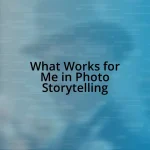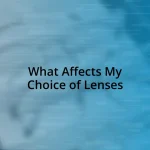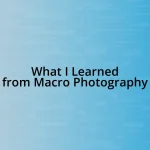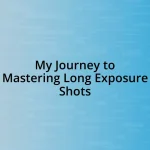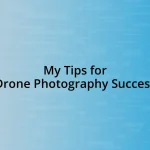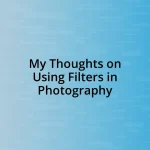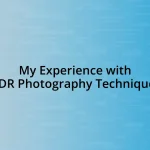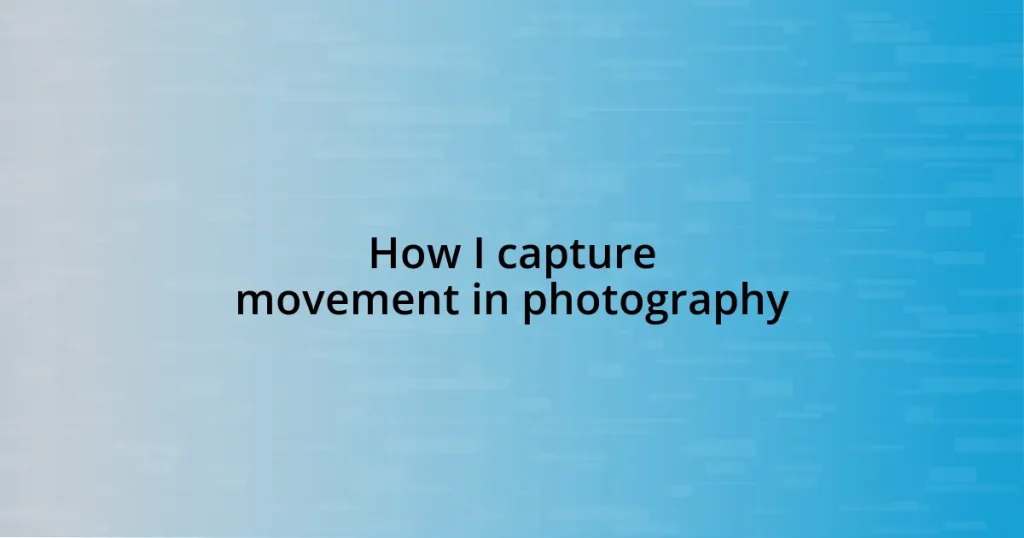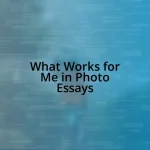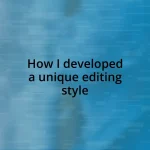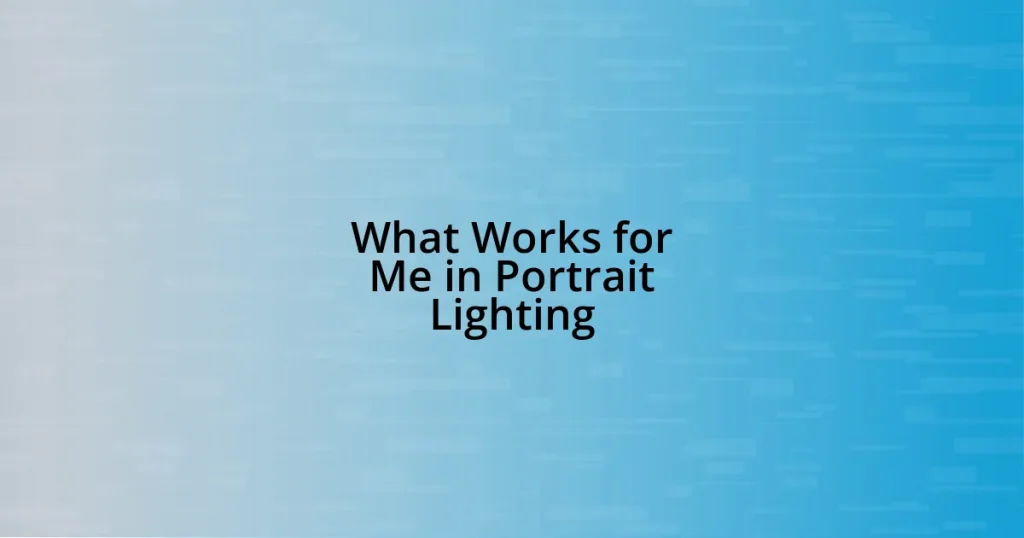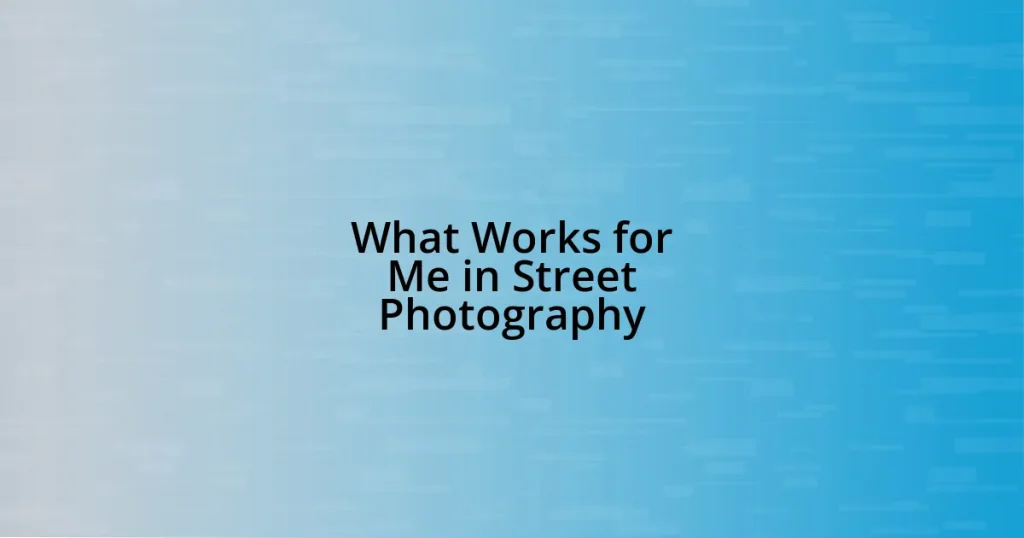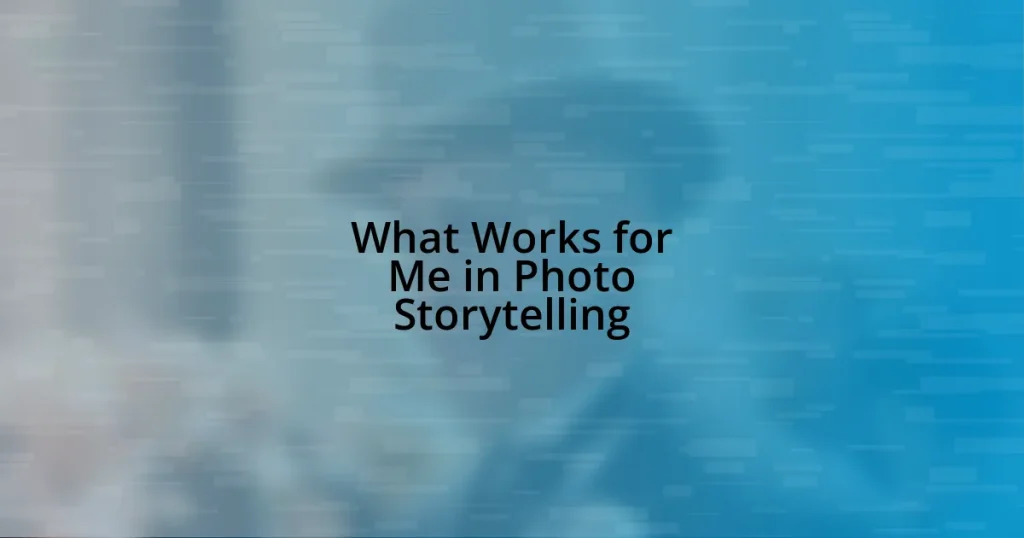Key takeaways:
- Understanding movement in photography involves capturing energy and emotion, not just speed.
- Experimenting with shutter speed, panning, and composition techniques can enhance the perception of motion in images.
- Lighting and post-processing effects, such as color adjustments and motion blur, significantly influence the dynamic quality of photographs.
- Trying different styles, like multiple exposures and abstract representations, can deepen emotional connections to movement in photography.
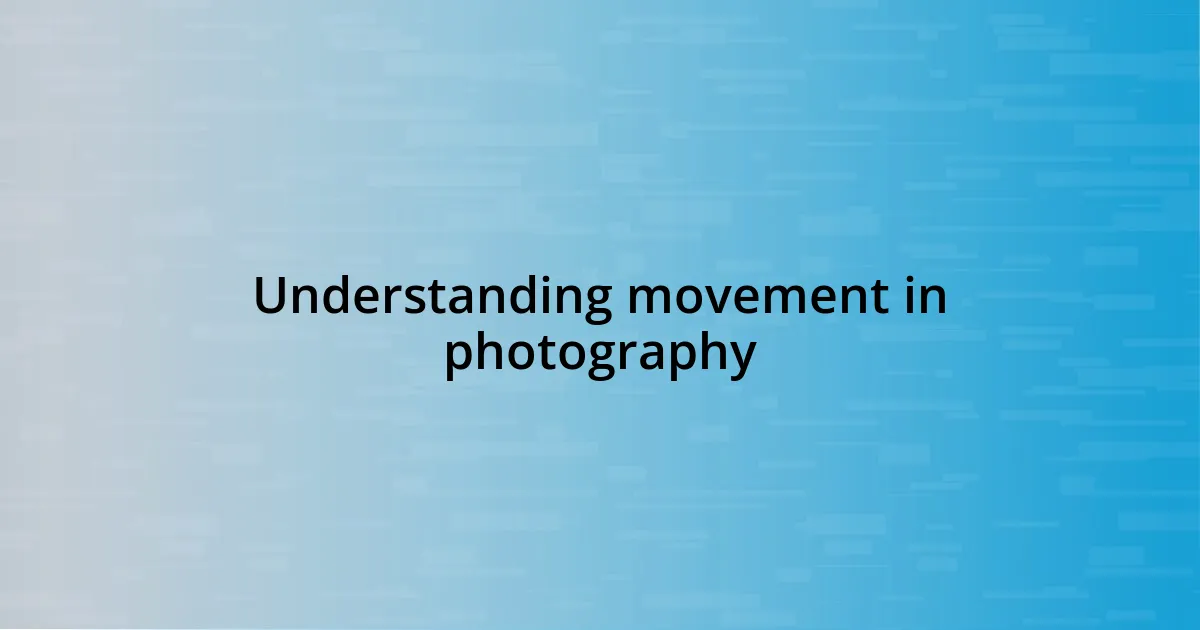
Understanding movement in photography
Understanding movement in photography is all about capturing the dynamic essence of a moment. One day while photographing a local marathon, I realized that movement isn’t just about speed; it’s the energy and emotion woven into the athletes’ expressions. Isn’t it fascinating how a still image can evoke the rush of adrenaline and determination?
When I think about movement, I often reflect on how different techniques can dramatically change the perception of motion. For instance, using a slower shutter speed can create a beautiful blur, suggesting velocity and urgency. Have you ever felt the thrill of a subject racing past while your camera captures that fleeting essence? That feeling of having the world rush by while you freeze a moment in time is utterly exhilarating.
I’ve also learned that understanding the direction of movement can guide your shot composition. Whether I’m tracking a sprinting animal or a child gleefully running towards me, I always consider how positioning can affect the storytelling aspect. Isn’t it interesting how framing can enhance the narrative of movement and bring an image to life? Engaging with this concept deepens my connection to the subjects I photograph, allowing their stories to be told through the lens.
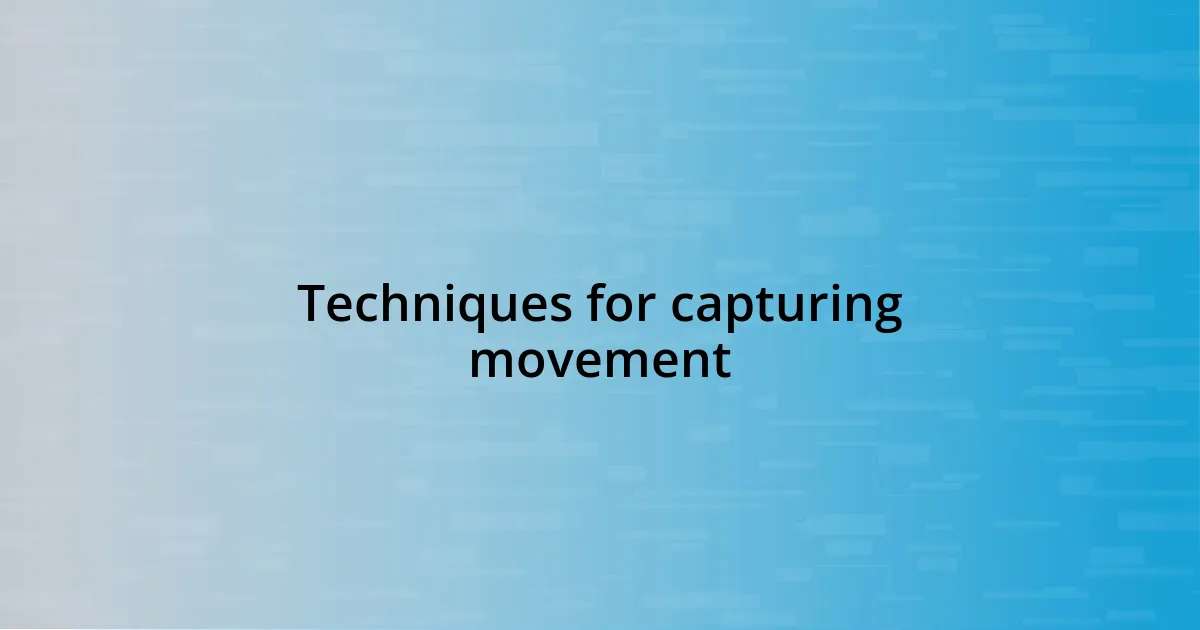
Techniques for capturing movement
When it comes to capturing movement, I’ve found that experimenting with shutter speed can significantly affect the outcome. For example, during a music festival, I decided to slow down my shutter speed while shooting the vibrant dancers on stage. The resulting streaks of color and blurred movements not only highlighted the energy but also created a sense of rhythm in the photographs. It’s like painting with light, where each flicker and sway contributes to a narrative of excitement.
Here are some techniques I often employ to capture movement effectively:
- Panning: Moving the camera in the same direction as the subject while adjusting the shutter speed can create a dynamic blur, emphasizing the subject’s speed.
- Long Exposure: Utilizing a long exposure time can tell a story of motion over time, like capturing the trails of car lights on a busy street.
- Burst Mode: Shooting in burst mode allows me to capture several frames in quick succession, increasing the likelihood of finding that perfect moment of action.
- Subject Focus: Maintaining focus on the moving subject while letting the background blur can create a sense of depth and context to the action.
These techniques have truly transformed how I see and photograph movement, uncovering layers of emotion and energy with each shot I take.
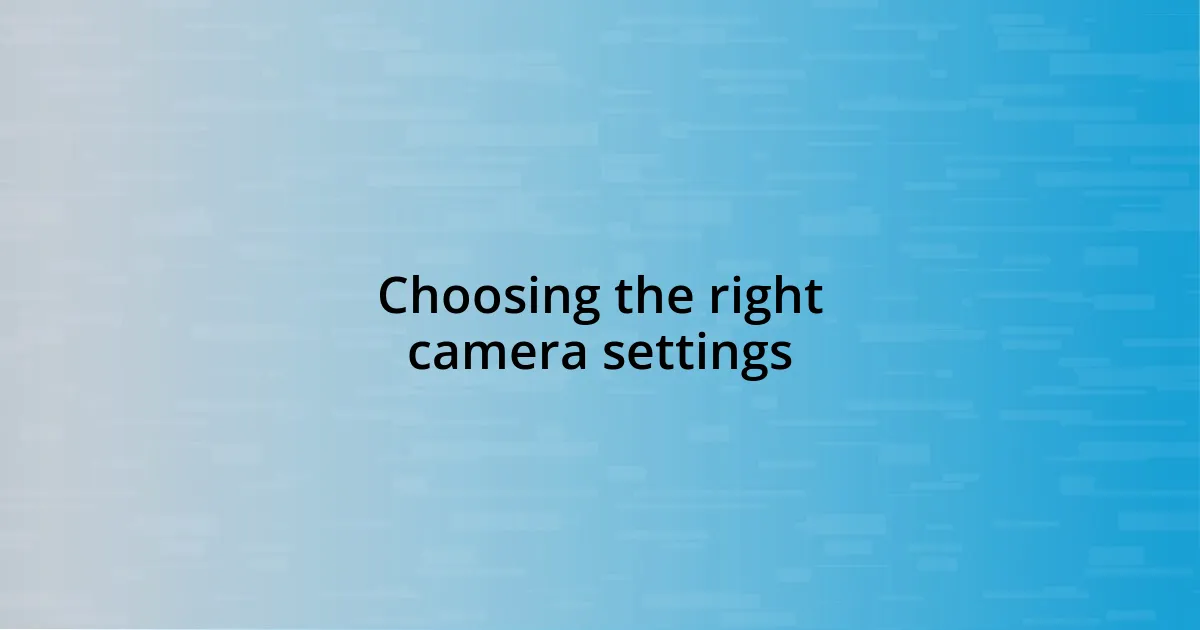
Choosing the right camera settings
Choosing the right camera settings can profoundly influence how effectively you capture movement in photography. One evening, while photographing the sunset over a bustling cityscape, I shifted my focus to the flowing traffic below. By adjusting my shutter speed to a slower setting, I was able to create streaks of light from the passing cars that turned the chaotic scene into a beautiful, flowing tapestry. Each decision I made, from aperture to ISO, helped to evoke the vibrant energy of the city while still highlighting the calmness of the sunset.
When determining settings, the interplay between shutter speed, aperture, and ISO should be your guiding principle. After experimenting with various combinations, I discovered that a shutter speed of around 1/60th of a second was ideal for capturing dancers on stage without losing their sharpness. This balance allowed me to freeze their movements while still conveying the atmosphere. Have you ever played with your camera’s settings to create a favorite shot? Those small adjustments can take an image from ordinary to extraordinary, transforming movement into visual poetry that speaks to the heart.
To simplify this, I often refer to a comparison of settings to help me make quick decisions in the field. Here’s a handy table to guide camera settings for various movement scenarios:
| Movement Type | Shutter Speed | Aperture | ISO |
|---|---|---|---|
| Fast Movement (e.g., athletes, cars) | 1/1000s to 1/500s | f/2.8 to f/5.6 | 200-800 |
| Moderate Movement (e.g., dancers, cyclists) | 1/250s to 1/60s | f/4 to f/8 | 400-1600 |
| Slow Movement (e.g., flowing water, streaks) | 1/30s or slower | f/8 to f/16 | 100-400 |
With these settings in mind, you can start to capture the kinetic energy around you and translate it into stunning visuals that resonate with the viewer.
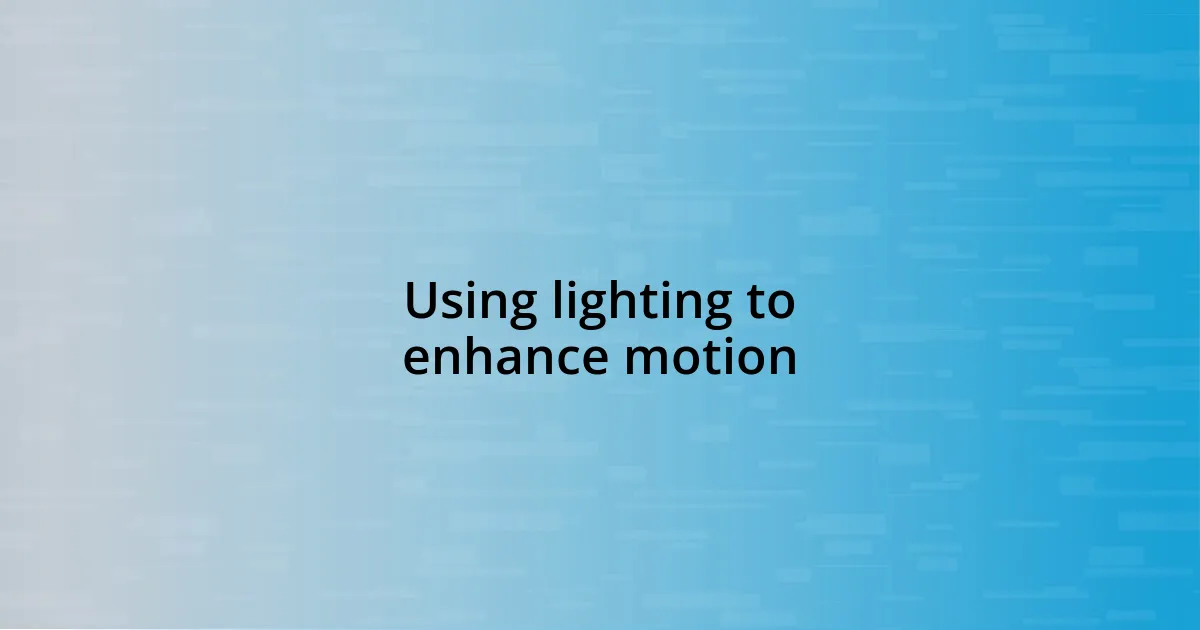
Using lighting to enhance motion
Lighting plays a pivotal role in how we perceive motion in photography. I remember a late afternoon spent at a skate park, where the golden sun softened the harsh edges of the scene. As the skaters performed their tricks, I positioned myself in a way that the sunlight cast dynamic shadows, making their movements look even more explosive and fluid. Have you ever noticed how a burst of light can turn an ordinary action into something extraordinary?
Incorporating backlighting can also work wonders. I experimented with this technique while photographing a group of dancers against a sunset. The sunlight illuminated them from behind, creating an ethereal glow around each figure. This not only accentuated their movements but added depth and emotion to the overall image. It felt like I was capturing their passion and energy in a way that drew viewers into their world.
To enhance the sense of motion further, I often use colored gels on my flashes, especially at night. Once, while photographing a lively street performance, I placed a blue gel filter on my flash, which added a dramatic effect to the swirling dancers in the neon-lit environment. The contrast of colors, combined with their swift movements, made each shot vibrate with excitement. It’s fascinating how something as simple as light can elevate an image, each frame telling a more compelling story. What lighting techniques have you found most rewarding in your experience?
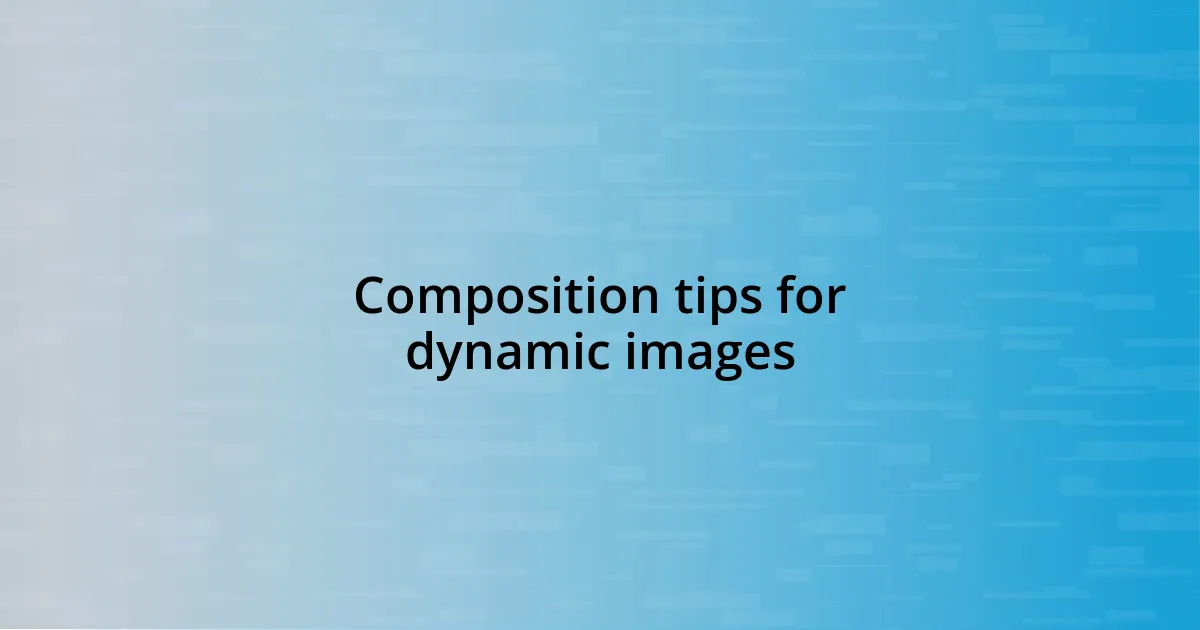
Composition tips for dynamic images
When it comes to composing dynamic images, the rule of thirds can be incredibly effective. I remember a time at a bustling festival where the energy was palpable. By placing the main subject, a performer juggling torches, off-center, I created a sense of movement as your eyes follow the action across the frame. This little adjustment made the photograph come alive, inviting viewers to engage with the scene.
Another technique I often find useful is leading lines. When I shot a marathon once, the runners were spaced along a winding path. By positioning my camera to capture the lines of the road leading towards the horizon, I drew attention to the movement and the determination in their stride. It felt like the path was guiding the viewer into the heart of the race, making it more than just a snapshot but a narrative of perseverance. Have you tried using lines in your compositions?
Framing your subject can also enhance the dynamism of your images. One chilly morning, I was at a winter market, capturing the swirling snowflakes around bundled-up shoppers. I used surrounding objects, like colorful stalls, to create a natural frame, immersing the people in an enchanting scene. This technique not only adds depth but helps the viewer feel as if they are part of the movement. It’s interesting how these compositional strategies can transform a simple shot into something that resonates emotionally. Have you explored ways to frame your subjects effectively in your photography?
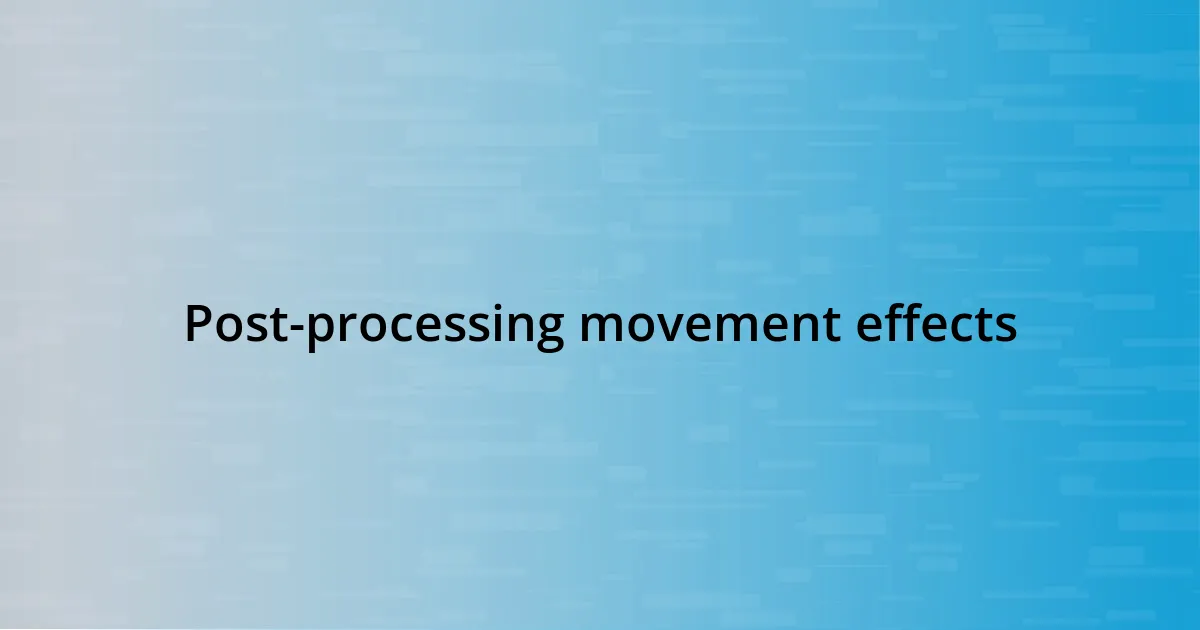
Post-processing movement effects
Post-processing can be a game-changer when it comes to enhancing movement effects in photography. I once worked on a series of shots from a vibrant street festival where I applied motion blur in post to mimic the energy of the crowd. It transformed a still frame into a dancing explosion of color and motion, making the image pulse with life. Have you ever thought about how a slight adjustment in editing can create a completely different feeling in your photos?
Another technique I enjoy is adding motion streaks for a more dynamic visual impact. During a cycling event, I captured the athletes in action and then used software to blur their wheels and create trails of movement in post-processing. This effect not only highlighted their speed but also added a sense of urgency to the scene. It’s fascinating how even small enhancements can turn a static moment into a thrilling narrative. What methods do you favor for creating that sense of speed in your images?
Finally, I’ve found that adjusting colors and contrast in post-processing can amplify the emotions connected to movement. After photographing a lively dance performance, I played with vibrancy and saturation to make the dancers’ outfits pop. The added energy in the colors mirrored the spirit of their movements, creating a more engaging viewer experience. It made me realize how powerful these simple edits can be in conveying movement and emotion in photography. What post-processing tricks have you discovered that truly bring your images to life?
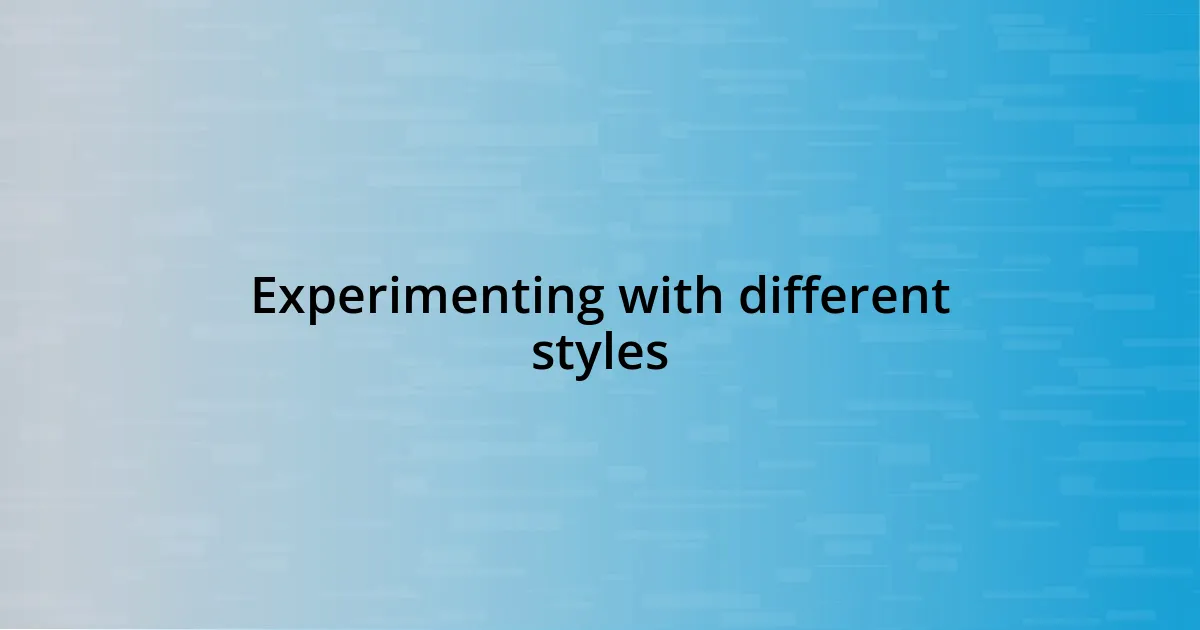
Experimenting with different styles
Experimenting with different styles has truly transformed my approach to capturing movement. I vividly recall a time at a local skate park, where I decided to try a panning technique. By adjusting my shutter speed and following the skaters as they performed tricks, I created sharp subjects against a beautifully blurred background. This technique not only froze the action but also conveyed a sense of speed and exhilaration that made the viewer feel part of the moment. Have you ever played with panning, and what did you think of the results?
Switching gears, I enjoy incorporating multiple exposures into my photography. At a lively music festival, I captured several shots of a band overlaid with the crowd swaying to the beat. The result was a dreamy, layered effect that conveyed the collective energy of the event. It felt like a perfect representation of the atmosphere, inviting viewers to lose themselves in the rhythm. Have you explored any multi-exposure techniques that showcase movement in your work?
I also find myself drawn to abstract representations of movement. On an autumn hike, I captured the vibrant leaves swirling in the breeze with a slow shutter speed. The resulting image was a mesmerizing blend of colors and forms, evoking the gentle dance of nature. This experience taught me that not all movement needs to be literal; sometimes, capturing the essence of movement can create a more emotional experience. What styles resonate with you when you think about capturing motion?



